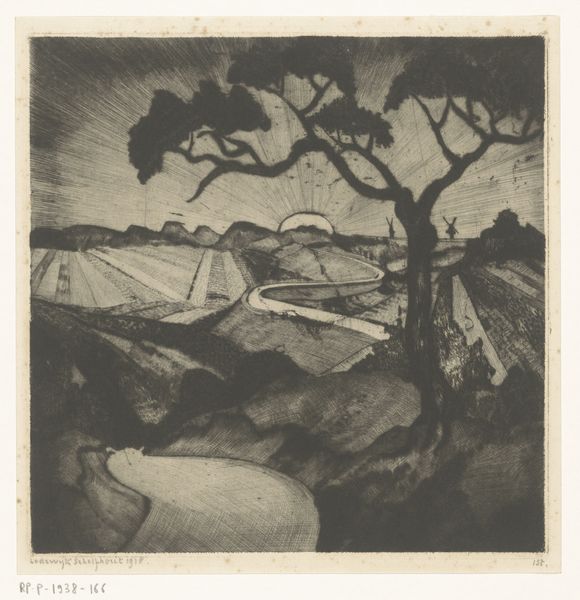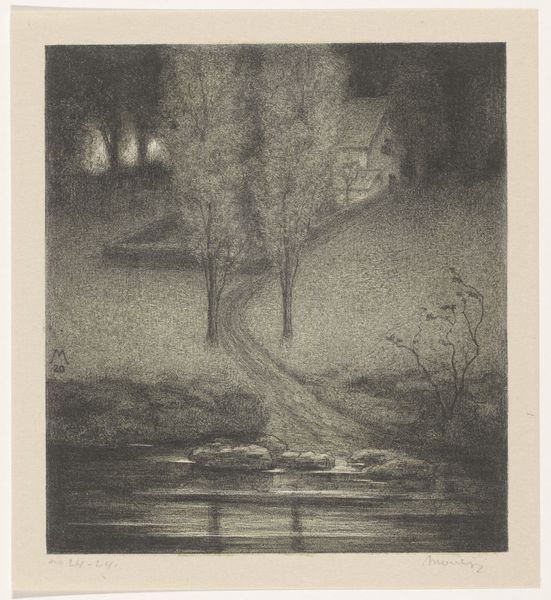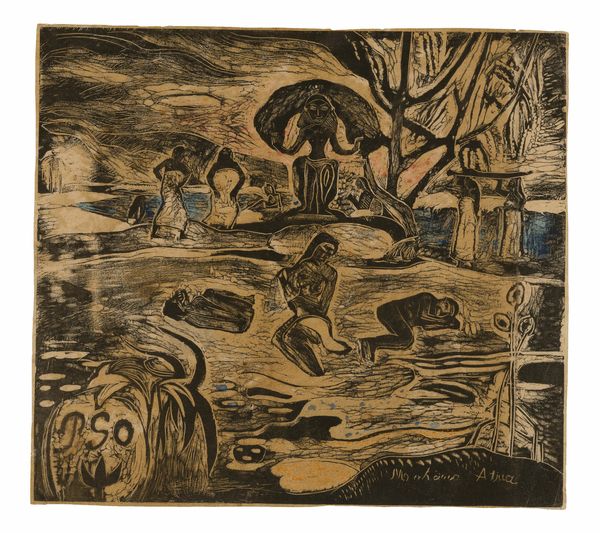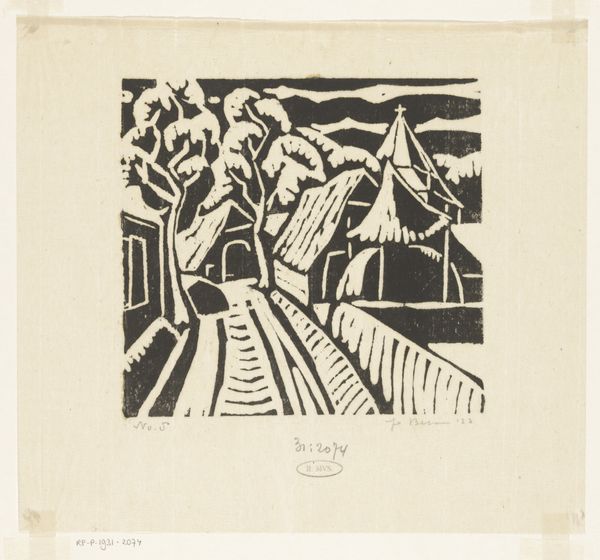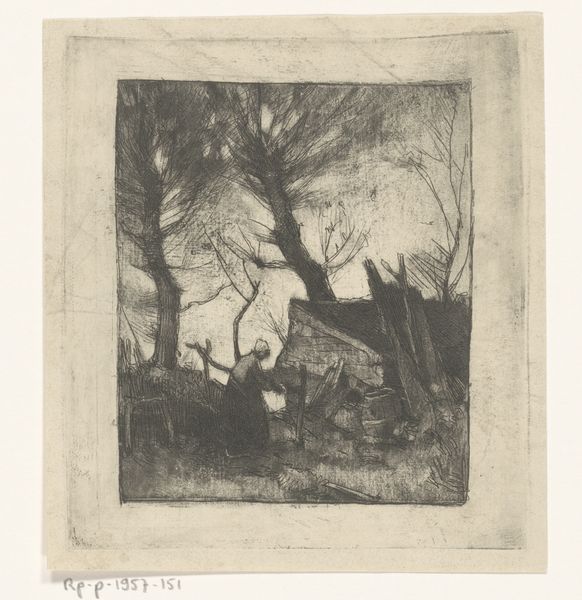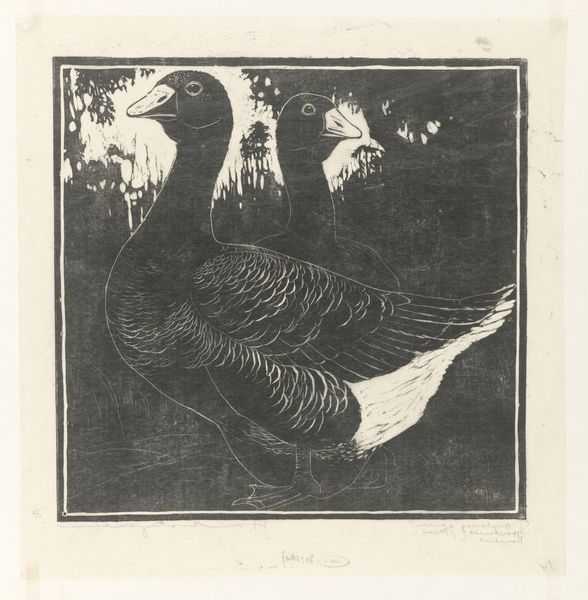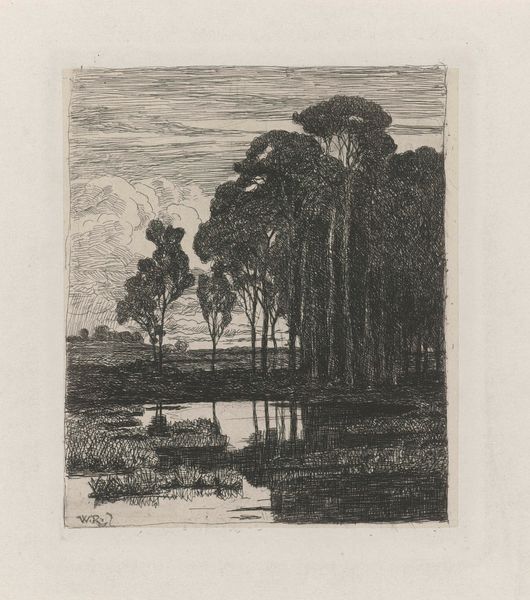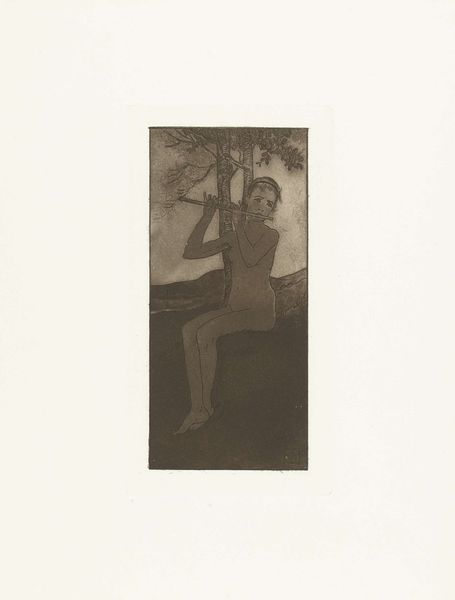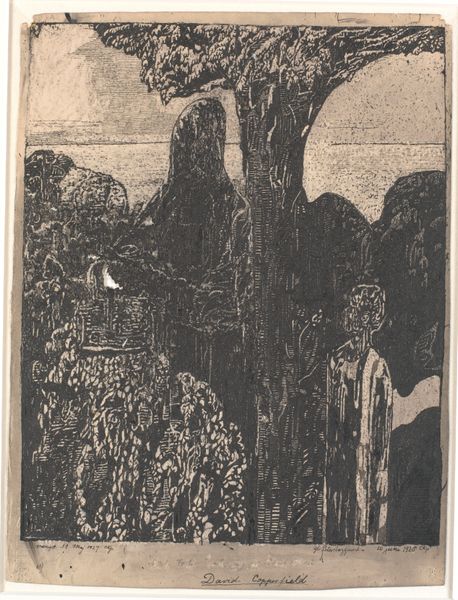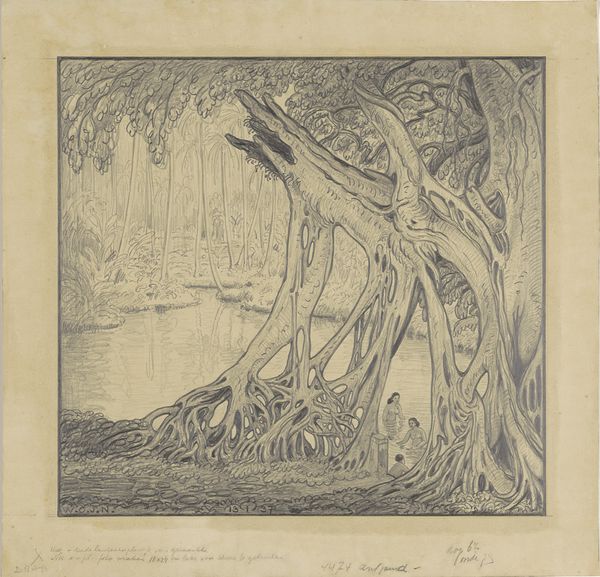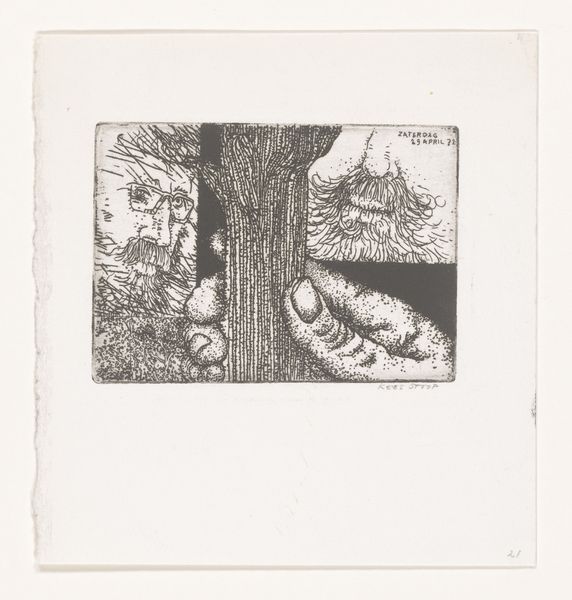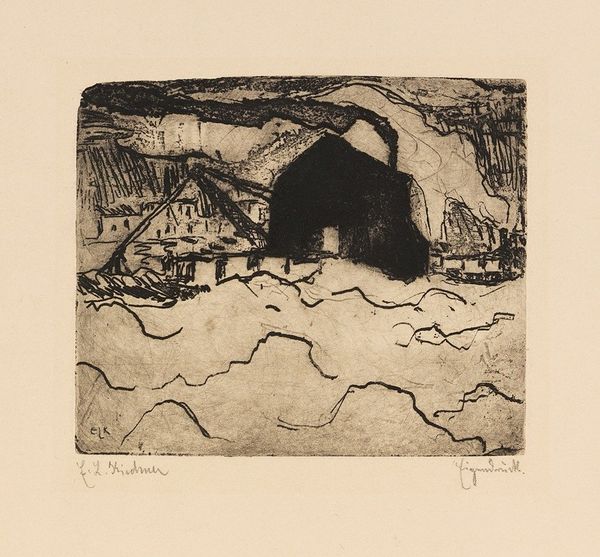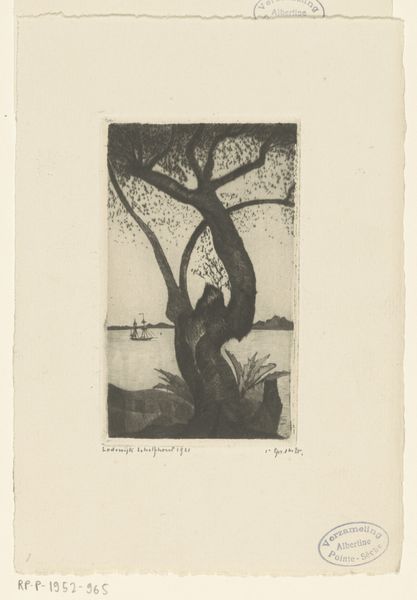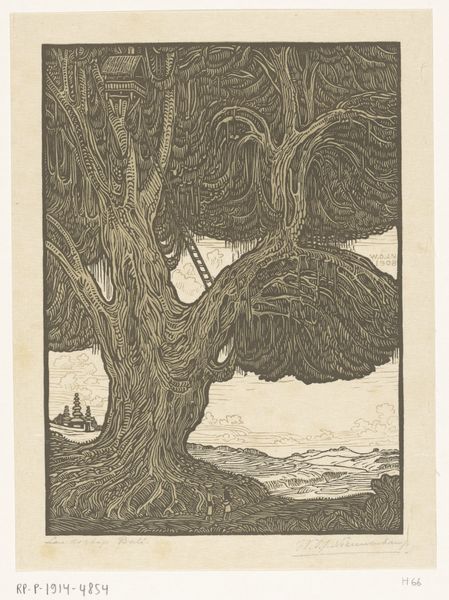
Dimensions: height 364 mm, width 364 mm
Copyright: Rijks Museum: Open Domain
Editor: This woodcut, "Zaaiende man," or "Sowing Man," by Bernard Essers, was created before 1928. I find the composition so striking; the stark contrasts create a dreamlike, almost surreal atmosphere. What formal elements stand out to you in this work? Curator: Immediately, I’m drawn to the dichotomy established through contrasting textures and forms. Notice how Essers juxtaposes the intricate network of branches with the broad, simplified planes of the field. Consider the interplay between positive and negative space—the dark, solid masses of the trees against the lighter, evocative shapes in the sky. What affect do you think this gives the overall composition? Editor: It makes the few areas of lighter shades become really emphasized; my eye is immediately drawn to the figure, because he has that brighter silhouette against a dark background. The horse is even lighter still. Curator: Precisely. Observe also the recurring diagonal lines: the path of the seeds, the furrows in the field, and the implied lines of the sower's gesture. This repetition generates a rhythmic visual pattern that moves our eye across the image, but it's somewhat conflicted by how they stop short on the left side. Why do you think the artist structured it this way? Editor: Maybe to create some sort of narrative structure? There’s certainly a before-and-after implied within the sower’s movement, starting on the right side. Curator: A compelling idea. In essence, we have deconstructed Essers's work into its base elements, examining their relations to one another to create our own interpretation of the meaning and construction of this image. Hopefully, this analysis of the aesthetic elements allows for greater insights into its symbolism. Editor: That’s a fascinating perspective. Focusing on the structure helps appreciate the symbolism even more.
Comments
No comments
Be the first to comment and join the conversation on the ultimate creative platform.
